Sustainability Lesson Plan

Lesson Plan Mindmap for Sustainability – Click to Enlarge
CLICK ICONS TO JUMP DIRECTLY TO EACH SUBJECT ON THIS PAGE








SUSTAINABILITY LESSON PLAN
This page is a free-shared lesson plan archive for teaching all educational subjects within the context and theme of “Sustainability”. It is purposed for use in community education environments, homeschool environments, traditional schooling environments, or as a supplemental and fun addition to any education program. As part of the complete Education for Life Program, this lesson plan is specifically designed to work in conjunction with the other components: Foundations of Teaching, Curriculum, Teaching Strategies, Learning Tools and Toys, Evaluation Model, and The Ultimate Classroom. If you’d like to learn how all these components work together, click here. Click here for the specifics focused on just using the lesson plans:
CLICK HERE FOR A DETAILED TUTORIAL ON HOW TO USE THIS LESSON PLAN
NOTE: The colors are provided as a possible linear progression (red/easiest to violet/most challenging) for people that might prefer a more linear structure. Our core philosophy, however, is that through creativity every color can be made easy or challenging for any learning level.
RELATED PAGES (mouse-over for descriptions and click for complete pages)
EDUCATION OVERVIEW | HOW TO USE THIS COMPONENT | OUR OPEN SOURCE PURPOSE

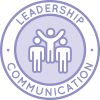
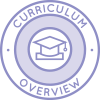
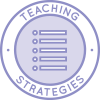
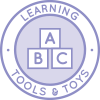
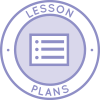
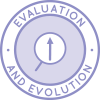
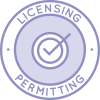
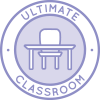
WAYS TO CONTRIBUTE TO EVOLVING THIS EDUCATION PROGRAM WITH US
SUGGESTIONS | CONSULTING | MEMBERSHIP | OTHER OPTIONS
A NOTE ABOUT ALL ONE COMMUNITY LESSON PLANS
The One Community lesson plans are intentionally designed for use in ANY educational environment and with ALL educational, cultural, religious/spiritual, and philosophical approaches to teaching and learning. They are designed without an ideological approach and specifically so they can be adapted to include the views, preferences, methodologies, and/or ideologies preferred by different parents and teachers.
For maximum flexibility and adaptation, they are also designed to be combined to teach multiple subjects at the same time. Doing this increases the creativity, effectiveness, and fun of your learning environment. Once we are on the property and operating our version of the complete school and Education for Life program, we will be adding video examples of how to combine the lessons. In the meantime, visit the Teaching Strategies page for a list of suggestions.
ARTS AND TRADES
CLICK HERE FOR THE COMPLETE SUBJECT OUTLINE FOR ARTS & TRADES
 | TEACHING ARTS AND TRADES WITHIN THE CONTEXT OF SUSTAINABILITY |

| The Arts- Make a picture* that represents what sustainability means to you.
- Create a puppet show* about sustainability.
- Create two different dances*: one that you would describe as sustainable and one that you would describe as not sustainable.
- Study the history of ceramics and create a presentation from ceramics* that illustrates how the industry and practices within have become more or less sustainable over time.
- Do an in depth exploration on the sustainability of modern theater and either write a report or create a theatrical presentation* on your findings/conclusions.
- Explore and demonstrate* how light design in theaters/movie production and/or another industry of your choice could be substantially more sustainable.
- Choose 20 of the violet level artistic leaning professions and write them from most to least sustainable. Use a top choice to build an implementable strategy* to increase the sustainability of a bottom one and open source your strategy.
|

| Trades- Create a sustainable food preparation practice for yourself and explain why you feel it is sustainable.
- Start and plant* one or more seeds and explain how a part of this process was or was not sustainable in your opinion.
- Create castings* of something of your choice using 3-5 different mediums and explain which you feel was the most sustainable and why.
- Explore 10-15+ green-level professions and create a presentation* that explains how each has been positively and/or negatively impacted by “the sustainability movement”.
- Chose a blue-level trade that you feel has had the most substantial changes in its practices in regards to sustainability in the last 100 years, and project forward what changes could be coming and what it may mean for the industry in the future in your opinion. Create a graphical representation* of the timeline of the trade’s products/services from the past to the present and include representations of product/profession for 5 different time periods within the next 20+ years.
- Pick a trade of your choice and write a ten+ page paper* on how mastery of that trade increases or decreases the sustainability of that trade, and include at least 10 research references, as well as information from at least 10 masters of that trade that you interview.
- Choose a trade that you feel could most benefit from an increase in sustainable practices and create and open source a strategy* for increasing sustainability within that industry.
|
| CLICK HERE TO EMAIL US IF YOU HAVE AN IDEA TO ADD TO THIS SECTION |
* Please note that anything with an asterisk is just a suggestion. The diversity of options with asterisks are interchangeable and purposed to stimulate your own ideas. Any one of these suggestions could be replaced with a written paper, any form of art project (drawing, painting, music, paper mache, clay, wood, knitting/embroidery, metals, etc. etc.), an experiment, a presentation, a mindmap, a computer program, a web design project, a piece of poetry or a song, an interpretive dance or play, a group project, or anything else. What we feel is most important is that both the Learner and the Teacher agree on an exercise/activity they both feel would be maximally engaging, fun, and effective. If you come up with an idea we haven’t already thought of, please share it with us.
ENGLISH
CLICK HERE FOR THE COMPLETE SUBJECT OUTLINE FOR ENGLISH
Note: Any language can be substituted for English. The subject is listed here as “English” because that is the primary language of most of the people on the team, and the official language of the country we’re building our initial location in.
 | TEACHING ENGLISH WITHIN THE CONTEXT OF SUSTAINABILITY |

| - Pick 5-10 new ‘big’ words related to sustainability and learn how to pronounce and use them perfectly*.
- Choose ten sustainability related words that are new to you and write a sentence* that uses each in the correct context. Then create one paragraph or a short story that uses at least 5 of them*.
- Write a page* about how your writing becomes more ‘sustainable’ as you improve with experience, and include a paragraph on how the changes in your handwriting have or have not changed other people’s perception of you and what you write about. Also include a paragraph about one new change you could make that you feel would positively impact the way your writings are perceived.
- Give an oral presentation* on “the most appropriate style and font for presenting sustainability related topics”. Include how ‘sustainability’ related words and topics are perceived differently by different groups of people, and how the choice of words, organization of words, and types of fonts and styles of writing elicit different responses.
- Choose a career or job within the sustainability industry that you feel is interesting or that you may potentially be interested in in the future, and create a fictional resume* that a qualified candidate would submit and its accompanying cover letter, for a real position that currently has an opening (do not submit it).
- Choose a published study or public document about sustainability or a sustainability related topic, and analyze its structure and composition and identify and define 20 different elements. Then rewrite it, or a component of it, to match a specific scholastic style of your choice*.
- Research the business missions, visions, & values of 20+ sustainability related companies that you feel are well established/respected and create an analysis of your findings. Then, choose an existing (or create a fictional) sustainability related business of your choice and create its business missions, visions, & values and open source your analysis and your creation*.
|
| CLICK HERE TO EMAIL US IF YOU HAVE AN IDEA TO ADD TO THIS SECTION |
* Please note that anything with an asterisk is just a suggestion. The diversity of options with asterisks are interchangeable and purposed to stimulate your own ideas. Any one of these suggestions could be replaced with a written paper, any form of art project (drawing, painting, music, paper mache, clay, wood, knitting/embroidery, metals, etc. etc.), an experiment, a presentation, a mindmap, a computer program, a web design project, a piece of poetry or a song, an interpretive dance or play, a group project, or anything else. What we feel is most important is that both the Learner and the Teacher agree on an exercise/activity they both feel would be maximally engaging, fun, and effective. If you come up with an idea we haven’t already thought of, please share it with us.
HEALTH
CLICK HERE FOR THE COMPLETE SUBJECT OUTLINE FOR HEALTH
 | TEACHING HEALTH WITHIN THE CONTEXT OF SUSTAINABILITY |

| - Create one pictorial representation* for what you feel would be a sustainable representation of each of the following: physical health, emotional & social health, spiritual health, and nutritional health.
- Write 2-5 sentences* for each of the following that describe what you feel a sustainable approach to it would be: physical health, emotional & social health, spiritual health, and nutritional health.
- Create a sustainable holistic health program and a non-sustainable holistic health program, each using 10+ elements from the yellow section. section. Then in a 3 to 4 page paper*describe what makes each program sustainable or not sustainable.
- Choose 3-5 green level health elements from each of the 4 health categories (physical, social, spiritual, and nutritional) and create a sustainable holistic health program* that integrates and develops all the elements you chose.
- Create a presentation* that shows to others the top 20 features of a healthy and sustainable relationship, both based off of research and siting your own experience, and properly cite 5+ scholarly articles that you reference in your work.
- Do research on and then create a program or regime* that helps increase people’s ability to be Aware of, Accept, Express & Manage Thoughts, Feelings & Emotions sustainably and effectively. Include a paper that explains your research and why you included all of the elements you include in your program.
- Imagine you were to take personal responsibility for what you see as the top 20 most pressing health (physical, nutritional, emotional/social, and spiritual health) issues in the world. Create a personal approach* to addressing these issues in a sustainable, comprehensive, and simultaneous way and open source share your solution.
|
| CLICK HERE TO EMAIL US IF YOU HAVE AN IDEA TO ADD TO THIS SECTION |
* Please note that anything with an asterisk is just a suggestion. The diversity of options with asterisks are interchangeable and purposed to stimulate your own ideas. Any one of these suggestions could be replaced with a written paper, any form of art project (drawing, painting, music, paper mache, clay, wood, knitting/embroidery, metals, etc. etc.), an experiment, a presentation, a mindmap, a computer program, a web design project, a piece of poetry or a song, an interpretive dance or play, a group project, or anything else. What we feel is most important is that both the Learner and the Teacher agree on an exercise/activity they both feel would be maximally engaging, fun, and effective. If you come up with an idea we haven’t already thought of, please share it with us.
MATH
CLICK HERE FOR THE COMPLETE SUBJECT OUTLINE FOR MATH
 | TEACHING MATH WITHIN THE CONTEXT OF SUSTAINABILITY |

| - Pick three 3-D shapes that you feel would be best to create something sustainable and create an image and explanation for your choices*.
- Learn 3 math tricks that help you and then describe* how they make math more ‘sustainable’ for you.
- Describe which of the following you feel is the most ‘sustainable’: addition, subtraction, multiplication, or division and give 15+ examples using yellow level math that support your choice*.
- Choose an aspect of sustainability and ‘prove’ it is sustainable by using 15+ green level or above math concepts to explain/calculate what makes it sustainable and include explanations for your concepts and why they relate to sustainability*.
- Create an argument* for which form of mathematics is ‘the most sustainable’ and provide at least 10 examples and equations that prove your argument.
- Create a rube goldberg machine* based on mathematical equations that you include that connect 5+ types of sustainable energy to create a final result.
- Explore indigo level concepts and choose the one you feel would be best to quantify an aspect of sustainability and write a 10+ page scholarly paper* about this including 10+ equations you create for real world examples that support your choice.
- Imagine you are the world’s foremost authority in mathematics and your job is to improve global sustainability using complex mathematics. Devise and thoroughly explain a strategy and implementation plan and open source it*, including at least 20+ equations from blue level or above mathematics.
|
| CLICK HERE TO EMAIL US IF YOU HAVE AN IDEA TO ADD TO THIS SECTION |
* Please note that anything with an asterisk is just a suggestion. The diversity of options with asterisks are interchangeable and purposed to stimulate your own ideas. Any one of these suggestions could be replaced with a written paper, any form of art project (drawing, painting, music, paper mache, clay, wood, knitting/embroidery, metals, etc. etc.), an experiment, a presentation, a mindmap, a computer program, a web design project, a piece of poetry or a song, an interpretive dance or play, a group project, or anything else. What we feel is most important is that both the Learner and the Teacher agree on an exercise/activity they both feel would be maximally engaging, fun, and effective. If you come up with an idea we haven’t already thought of, please share it with us.
SCIENCE
CLICK HERE FOR THE COMPLETE SUBJECT OUTLINE FOR SCIENCE
 | TEACHING SCIENCE WITHIN THE CONTEXT OF SUSTAINABILITY |

| Life Sciences- Identify one animal behavior and one plant behavior that you feel is sustainable and explain why you feel that way*.
- Describe* a relationship that you feel is sustainable between each of the following:, a plant and an insect, a plant and a non-insect animal, and an insect and a non-insect animal.
- For each of the yellow level life science topics, make a statement* on whether you believe it is sustainable or not sustainable and why you feel that way, referencing 2+ real life examples that support your decision for each.
- Create a ‘web’ and an accompanying explanation* that shows how all of the green level life science topics impact the sustainability of each other.
- Choose 5 of the blue level life science topics and give 10+ examples* for each of how it displays sustainability.
- Create a life classification system* based on sustainability and classify and explain 100+ organisms* based on your classification system.
- Research “Population Fluctuations”, “Nervous System and Neurons”, and “Amino Acids and Base Pairing” plus an additional 3 randomly chosen indigo level life science topics and write a 10+ page story* about how they each impact the sustainability of each other.
- Choose your favorite, or if you do not have a favorite, randomly choose a violet level life science topic and write a manual* on 50-100+ different ways you feel that field could be made more sustainable and open source the manual you create. Include detailed examples and detailed potential short-term and long term impacts of your ‘top ten picks’ for the solutions you feel would be the most viable and/or most impactful.
|

| Physical Sciences- Name* 5 materials you would say are sustainable and 5 you would say are not sustainable and give a reason why you feel that way for each.
- Create an integrated picture* that shows a sustainable example of each of the following all working together: matter, energy, light, electricity, and magnetism. Write out an explanation for why each of your examples is sustainable.
- Write an argument* on whether the conservation of energy is or is not sustainable.
- Create a mindmap, diorama, or other infographic* that shows three scientific examples of how each of the following is or is not sustainable: Forces (including gravity), States of Matter, Molecules, Chemical Changes and/or Reactions, Density and/or Buoyancy. (There should be a total of 15+ examples, 3 for each topic.)
- Choose three blue level physical science topics and for each, create an argument* for how it could be considered sustainable or not sustainable, citing 3-5 specific scientific experiments and/or research papers for each to back your position.
- Choose an indigo level physical science topic and create and execute your own open source experiment* that scientifically ‘proves’ the level of sustainability of something within that topic.
- Choose a form of chemistry or physics that you feel would be most likely to enhance the sustainability of humans on planet Earth and create a complete strategy* that is built on the science you chose. Open source your strategy and get it shared/implemented in as large scale way as you can.
|

| Earth Sciences- Describe* what a sustainable season versus a non-sustainable season would be like to you.
- Choose and describe* what you would say are 1-3 sustainable and 1-3 unsustainable practices for three natural resources of your choice and for each of the major earth components, which are air, water, and land.
- Think of two scenarios for how the rock and water cycles work together – one where it could be considered a ‘sustainable’ event and where it could be considered ‘unsustainable’, and provide a diagram/illustration* and brief explanation for each.
- Choose 10 earth science events and write out* two detailed scenarios/stories for each – one where it could be considered a ‘sustainable’ event and one where it could be an ‘unsustainable’ event. Provide two+ pages of examples and/or your reasoning for each.
- Write two convincingly compelling 4+ page research papers* that each cite at least 10+ academic sources. In one, convincingly argue for and in the other, convincingly argue against the sustainability of the solar system and/or stars.
- Choose 5 indigo level earth science topics and create a 15+ minute multimedia presentation* exploring the sustainable and/or unsustainable interconnectedness of each topic to one another.
- Chose a violet level earth science field and do an in depth analysis of the field including a historical analysis of the field (up to present day), and the tools and research methods in the field, etc. Next, using what you have learned, create an argument* for or against whether the assessments and arguments for the current state/condition are valid/accurate and whether the current state/condition is sustainable moving forward. If you find today’s assessment methods are not valid, create a valid assessment and then assess the sustainability of the subject’s current state. Open source all of your research and results.
|
| CLICK HERE TO EMAIL US IF YOU HAVE AN IDEA TO ADD TO THIS SECTION |
* Please note that anything with an asterisk is just a suggestion. The diversity of options with asterisks are interchangeable and purposed to stimulate your own ideas. Any one of these suggestions could be replaced with a written paper, any form of art project (drawing, painting, music, paper mache, clay, wood, knitting/embroidery, metals, etc. etc.), an experiment, a presentation, a mindmap, a computer program, a web design project, a piece of poetry or a song, an interpretive dance or play, a group project, or anything else. What we feel is most important is that both the Learner and the Teacher agree on an exercise/activity they both feel would be maximally engaging, fun, and effective. If you come up with an idea we haven’t already thought of, please share it with us.
SOCIAL SCIENCES
CLICK HERE FOR THE COMPLETE SUBJECT OUTLINE FOR SOCIAL SCIENCES
 | TEACHING SOCIAL SCIENCES WITHIN THE CONTEXT OF SUSTAINABILITY |

| - Choose and explain* what you feel is one sustainable and one non-sustainable practice and explain why you feel that way for each of the following: a social skill, a behavior in your family, and a behavior/practice in your school/community.
- Choose and write a few sentences* about what you feel are three sustainable and three non-sustainable practices and explain why you feel that way for each of the following: a sport, a strategy of communication, a type of education/way to learn, a way to deal with stress, and an emotional state.
- Study history in the context of the different ways that it was recorded, maintained, and interpreted and write a report* about 10 methods and create an argument for how sustainable you feel each method is and provide specific examples for each one that support your argument.
- Write a report and prepare a presentation* that compares and contrasts the sustainability of both religion and law throughout history, and how they are or are not similar, and how they have influenced each other.
- Study existing and past political systems in the context of how sustainable they are for individuals, small groups, and large groups simultaneously and either choose the one you feel is most sustainable for all three or create a new system that you feel would be maximally sustainable and create an in depth argument* for your position with detailed explanations and examples from the perspectives of all three groups.
- Research US foreign policy and its effects on and relationships with worldwide industry and chose the 10 policies/practices you feel are the most sustainable and 10 you feel are the least sustainable and in an essay* explain why you chose each. Then choose/create* one policy that you feel would positively impact all or most of your lower 10 choices and how it would do so, and open source your work.
- Research 20 different types of communities focusing on the sustainability of each from as many aspects as possible (resource management, political, social, energy, psychological, efficiency, health/wellness, education, ability to last, duplicability, etc.) and determine what you believe to be the most sustainable aspects of each and design your own community* that incorporates all of these aspects and open source your design and your research and reasoning.
|

| Foreign Languages
(Each of the following is to be completed in the foreign language(s) being studied)- Learn words for different sustainability related concepts.
- Read & write with words for sustainability related concepts.
- Explore sustainability in fiction.
- Explore & create different types of literature in relation to sustainability.
- Compose a new piece of literature about sustainability.
- Explore the complete history of and writings about sustainability.
- Write a dissertation-level paper on sustainability.
|
| CLICK HERE TO EMAIL US IF YOU HAVE AN IDEA TO ADD TO THIS SECTION |
* Please note that anything with an asterisk is just a suggestion. The diversity of options with asterisks are interchangeable and purposed to stimulate your own ideas. Any one of these suggestions could be replaced with a written paper, any form of art project (drawing, painting, music, paper mache, clay, wood, knitting/embroidery, metals, etc. etc.), an experiment, a presentation, a mindmap, a computer program, a web design project, a piece of poetry or a song, an interpretive dance or play, a group project, or anything else. What we feel is most important is that both the Learner and the Teacher agree on an exercise/activity they both feel would be maximally engaging, fun, and effective. If you come up with an idea we haven’t already thought of, please share it with us.
TECHNOLOGY AND INNOVATION
CLICK HERE FOR THE COMPLETE SUBJECT OUTLINE FOR TECHNOLOGY AND INNOVATION

| TEACHING TECHNOLOGY & INNOVATION WITHIN THE CONTEXT OF SUSTAINABILITY |

| Technology- Draw* 5 examples of technology-based sustainability.
- Learn how 5 simple machines work and describe in a drawing* how you feel each is or is not sustainable.
- Explore and explain what the three most sustainable machines are in your household.
- Use a graphics program to model* something you consider sustainable and label 15 key components of the item you are modeling.
- Choose a blue level technology ‘system’ and create a multimedia presentation* that shows how that ‘system’ has evolved over time from a sustainability perspective.
- Research and create a scholarly article* about the individuals and corporations that influenced the amounts of sustainable technologies that are available to the masses today.
- Write a piece of software or create a technology-based educational tool* that is designed to teach people about sustainability and/or make people’s lives more sustainable and open source it.
|

| Innovation- Pick your favorite thing in nature and imagine and create an image of a new type of sustainable technology* based on it.
- Talk* about the different forms of learning you feel are most sustainable for you and why.
- Design your ‘perfect’ environment* that would make learning the most sustainable for you and include and describe at least 15+ elements/items and describe how each help make it more sustainable for you.
- Use the values/needs hierarchies (Abraham Maslow’s and Clare Graves’s systems) to explore sustainability. Create a diagram* that charts where each of the following fall in each system: you, your family, your community, your state, your country, the world (and any others you wish to include). Include a written explanation for the placement of each and make one detailed suggestion for each that you feel would help move it in what you feel is a positive direction.
- Create a presentation* on how ‘systems’ do or do not make things more sustainable and cite examples from 10+ blue level innovation systems.
- Choose two people from the indigo level innovations section of the technology and innovation molecule; one that you feel has the most sustainable methodologies and one that you feel has the least sustainable methodologies, and create a 10 page paper* that explains and supports your argument for each choice, with at least 10+ examples of methodologies for each person.
- Create and open source a lesson plan* titled ‘Getting innovative about sustainability in innovation’ by studying the innovation process itself using 5+ of the violet level points as case studies, and identifying 20 aspects you find that are sustainable and 20 that you find are not. Then, use this to design a lesson plan about how to to become a sustainably innovative thinker/creator.
|
| CLICK HERE TO EMAIL US IF YOU HAVE AN IDEA TO ADD TO THIS SECTION |
* Please note that anything with an asterisk is just a suggestion. The diversity of options with asterisks are interchangeable and purposed to stimulate your own ideas. Any one of these suggestions could be replaced with a written paper, any form of art project (drawing, painting, music, paper mache, clay, wood, knitting/embroidery, metals, etc. etc.), an experiment, a presentation, a mindmap, a computer program, a web design project, a piece of poetry or a song, an interpretive dance or play, a group project, or anything else. What we feel is most important is that both the Learner and the Teacher agree on an exercise/activity they both feel would be maximally engaging, fun, and effective. If you come up with an idea we haven’t already thought of, please share it with us.
VALUES
CLICK HERE FOR THE COMPLETE SUBJECT OUTLINE FOR VALUES
 | TEACHING VALUES WITHIN THE CONTEXT OF SUSTAINABILITY |

| - Create a picture* with you in it that expresses what sustainability means to you as a value.
- Ask 5 people you consider closest to you what they feel sustainability is and means to them and where it fits in with their values, and create a presentation* that shares the overall picture of all the answers together, and how your opinion fits in with it.
- Name 3+ of your own personal values you feel are the most sustainable and 3+ you feel are the least sustainable and write a one page paper* for each set that talks about why you chose each one and why you feel each is more/less sustainable compared to your other value.
- Rank the green level values from highest to lowest based on your perception of their level of ‘cohesion with sustainability,’ and explain in detail in a minimum of 2 typed pages* why you placed each of the top and bottom ten where you did.
- Choose the three blue level values you feel are least related to sustainability and create a 5 minute argument speech* that explains how they in fact can be used to increase/support sustainability effectively.
- Rank the indigo level values from highest to lowest based on the influence you perceive they currently have on global sustainability, and explain in detail in a minimum of 3-5+ typed pages* why you placed each of the top and bottom ten where you did, and suggestions you would make for rearranging the global values that you feel would have a more positive impact on global sustainability in your opinion and why. Include a detailed strategy for how we could increase the new top ten values you suggested on a global scale.
- Create a list of violet level values that you feel are the top ten most ‘positive’ and top ten most ‘negative’ influences on global sustainability today and do a historical analysis on how each came to influence sustainability today then create a paper about your findings. Then, choose ten from the violet level (which may be different than the ones you already selected) that you feel would have the most beneficial future impact on global sustainability. Using what you have learned from the historical study, write a detailed ‘guide/manual’* on how to inspire a movement for global sustainability based on increasing the ‘awareness and use’ of the top 10 values you suggest and include details for why you feel each of the ten you selected would be the most beneficial. Open source all your work.
|
| CLICK HERE TO EMAIL US IF YOU HAVE AN IDEA TO ADD TO THIS SECTION |
OTHER RESOURCES
We're building a resource section. Click here if you have a suggestion or resource for this page.
OPEN SOURCE SUBJECT RESOURCES (click icons for complete pages)



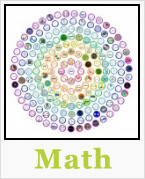



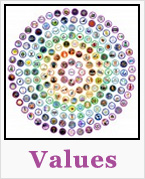
OPEN SOURCE CURRICULUM OUTLINES (click image for summaries and links to complete pages)
CARE
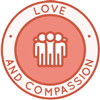
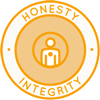
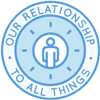
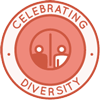
SHARE
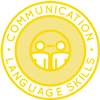
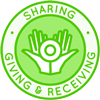
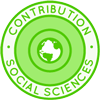
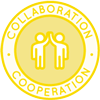
PLAY
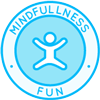
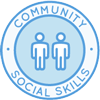
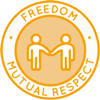
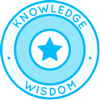
OPEN SOURCE TEACHING METHODOLOGY SUMMARIES
Montessori | Waldorf | Orff | Reggio | Multi-Intelligence | Bloom's Taxonomy | Study Tech | I-WE
INDEX OF ALL THE ONE COMMUNITY OPEN SOURCE LESSON PLANS

Click this image for the Lesson Plans for Life page with links to the rest of the lesson plans
THE WORLD'S LARGEST ONLINE FREE EDUCATION RESOURCE ARCHIVE
RELATED CONTENT AND OTHER RELATED RESOURCES
We're building this resource section. Click here if you have a suggestion or resource for this page.














 One Community
One Community












